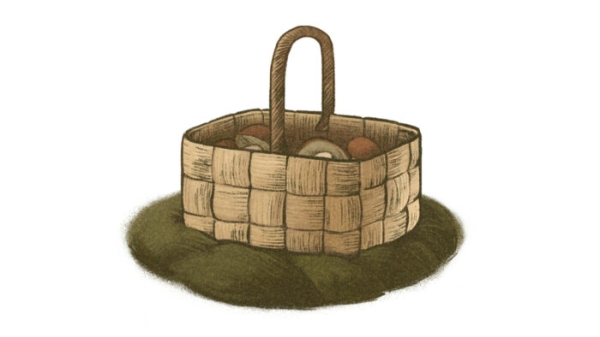The word porcini means “piglets” in Italian. In English they go by “penny bun” and “king bolete.” These are only a few of the many names people use to refer to this beloved wild mushroom. Here’s why you should love them too.
1. They are delicious
Finnish porcini mushrooms are loved all over the world. They are amazing in pasta, soup or on their own sliced thinly with some thyme, salt, balsamic vinegar and olive oil. Dried porcini mushrooms keep for years and have an even richer flavour than fresh ones.
Porcinis are an important ingredient in both French and Italian cuisine. Each year, hundreds of tons of Finnish porcinis are exported to Italy, so if you have a risotto at a Roman trattoria, chances are that the porcini in it have grown in a Finnish forest.

2. They belong to everyone and no one
Most Finnish porcinis are in fact not exported but picked by Finns and enjoyed locally. Mushrooms are neither plants nor animals. Maybe that’s why mushroom picking in an autumn forest sometimes resembles treasure-hunting for mystical creatures.
Foraging is a great mindfulness exercise, too. It is difficult to think about deadlines and meeting agendas while finding your way to your secret porcini spots or looking for the right type of forest to find new porcini spots (young growth with spruce and birches), let alone figuring out if the mushrooms you’ve found are actually bitter bolete mushrooms and not porcini. It is not surprising about one third of Finns list mushroom-picking as a hobby, according to a Statistics Finland survey.
Mushroom picking is a low-threshold hobby as in Finland forest mushrooms belong to everyone and no one regardless of where they grow. Thanks to the legal concept of everyone’s right all people residing or visiting Finland are allowed to pick wild berries, mushrooms and flowers as long as they are not protected species.

3. They are beautiful to all senses
When you hold a porcini mushroom in your hands, you certainly know you’re holding something valuable. They feel heavy and dense, and their surface resembles the softest luxury leather. Their fresh woodsy, nutty aroma remains to be discovered by perfumers, but their beauty hasn’t escaped the attention of designers and artists. In recent years we’ve seen a whole boom of mushrooms in interior design, including mushroom-shaped lampshades, stools and candleholders as well as mushroom motifs in textiles and tapestries. Mushroom-inspired décor such as Finnish artist Teemu Järvi’s porcini posters or textile artist Elina Helenius’ linen towel collaboration with Lapuan Kankurit allows you to enjoy the beauty of mushrooms outside the foraging season.
4. They are good for you – and the planet
Many of us are looking for climate-friendly and healthy alternatives for meat, and mushrooms are a popular option. They are low in fat and have a small carbon footprint. Mushrooms contain significantly more protein than most plants – dried porcinis have 30 grams of protein per 100 grams. Porcinis are also a treat for your gut as they contain similar amounts of fibre as wheat bran.

5. They teach us that what matters is on the inside
When we think about mushrooms we usually think of the part that can be picked and cooked. This means we ignore the majority of the fungal organism: mycelium that lives in the soil interwoven with tree roots. Mycelium, which is a root-like structure of fungus, connects mushrooms to each other and to symbiotic trees. Mycelium works as the transfer system for water and nutrients; it’s how mushrooms feed. It also helps different plants in the forest to communicate.
It seems to work as a communication network through electric impulses, but so far science has failed to explain how it functions. Nor do we know exactly how the symbiosis between the tree and the fungi actually works. This lack of understanding might at least partly explain why efforts to cultivate porcini (as well as truffles and chantarelles) haven’t been successful so far.
In fact, porcinis may have a lesson for us. They teach us that you need friends and networks to succeed, and that helping others will also help you. Some scientists even suggest mushrooms show that evolution is not always about the survival of the fittest – it can also be about the survival of those who form the best partnerships with each other.
By Ninni Lehtniemi; illustrations by Hilla Ruuskanen; ThisisFINLAND Magazine
Source: finland.fi


